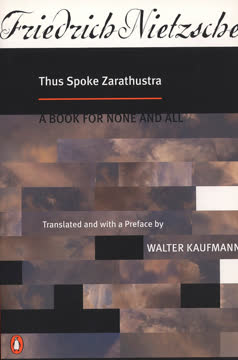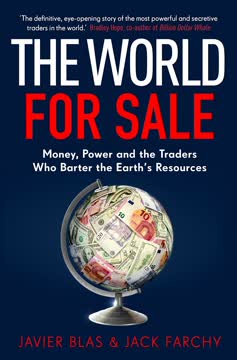Key Takeaways
1. The Search for "Lo Mexicano": A Contested Identity
All of our anxious tensions express themselves in a phrase we use when anger, joy, or enthusiasm cause us to exalt our condition as Mexicans: ‘‘¡Viva México, hijos de la chingada!’’
Defining Mexican-ness. Mexicans have long been preoccupied with defining their national character, using terms like lo mexicano and mexicanidad. This introspection often stems from perceived national shortcomings or a sense of being stuck in a troubled adolescence, contrasting with the perceived modernity of other nations. Early foreign observers like Joel Poinsett viewed Mexicans through a lens of racial inferiority and cultural backwardness.
Complex origins. Intellectuals like José Vasconcelos countered these views by celebrating the mestizo as a new "cosmic race," blending indigenous and European virtues, destined to lead humanity. Octavio Paz explored the psychological wounds of conquest, seeing the Mexican character shaped by violation and a denial of origins, symbolized by La Malinche and the cry hijos de la chingada. Guillermo Bonfil Batalla argued for the persistence of a distinct "México profundo," an indigenous civilization suppressed by a Westernized elite.
Stereotypes and politics. Roger Bartra critiqued these intellectual portraits, suggesting they often perpetuated stereotypes like the pelado (represented by Cantinflas), which served to legitimize the state's authoritarian rule by portraying the people as inherently flawed and needing control. Alma Guillermoprieto noted how modernization and globalization threaten traditional cultural expressions like ranchera music, raising questions about the future of a distinct Mexican identity in an increasingly interconnected world.
2. Ancient Civilizations: Cosmology, Sacrifice, and Maize
Only through the glass of ritual, smoky and obscure as that glass is, do we have much chance of discerning how violence, on the field of battle and off it, was understood, and how warrior and civilian society cohered.
Rich and complex cultures. Mesoamerica was home to magnificent civilizations like the Aztecs and Maya, characterized by sophisticated urban centers, intricate social hierarchies, advanced knowledge of astronomy and mathematics, and complex religious systems. Their worldview was often fatalistic, believing time moved cyclically and the cosmos required human action to maintain balance.
Ritual and violence. Aztec culture, in particular, is known for its elaborate rituals, including large-scale human sacrifice. Historians like Inga Clendinnen argue that these practices were not mere brutality but deeply embedded in their understanding of the cosmos, warfare, and the relationship between humans and nature. Sacrifice and warfare were seen as necessary acts to feed the gods and maintain the cycles of life and death.
The centrality of maize. For cultures like the Maya, maize was more than just a staple crop; it was sacred, the very substance from which humans were created, as recounted in the Popol Vuh. J. Eric Thompson highlights the profound reverence Maya peasants held for maize, seeing it as a living being and a divine gift, around which their agricultural and religious lives revolved. Omens, as recorded in the Florentine Codex, were believed to foretell significant events like the Spanish Conquest, reflecting a pervasive sense of destiny and the interconnectedness of the human and cosmic realms.
3. Conquest and Colony: Exploitation, Resistance, and a New Order
What has destroyed and continues to destroy the Indians is their forced labor in the construction of large stone masonry buildings in the Spaniards’ towns.
A violent encounter. The Spanish Conquest, vividly described by Bernal Díaz del Castillo and Hernán Cortés, was a clash of civilizations that resulted in the destruction of the Aztec empire and the imposition of a new colonial order. Native accounts, like the chronicle from Tlatelolco, reveal the devastation and suffering experienced by the indigenous peoples.
Exploitation and demographic collapse. The colonial system was built on the exploitation of indigenous labor and resources. Despite initial intentions and the efforts of early missionaries like the Franciscans (as recounted by Mendieta), the encomienda and repartimiento systems subjected Indians to brutal conditions. Alonso de Zorita's account details the myriad ways indigenous populations were decimated by disease, overwork, and mistreatment, leading to one of history's greatest demographic catastrophes.
Enduring legacies. The colonial period established enduring patterns of land concentration in the hands of a few (the latifundio), racial hierarchy, and the complex, often contradictory, role of the Catholic Church. Enrique Florescano describes how the latifundio expanded at the expense of indigenous communities, who nonetheless resisted tenaciously. Irving Leonard's portrait of a Baroque Archbishop-Viceroy illustrates the blend of piety, power, and corruption within the colonial elite. Sor Juana's poetry offers a rare glimpse into the intellectual life of women and critiques the social norms of the era, highlighting the hypocrisy of a patriarchal society.
4. Trials of the Young Republic: Instability and Ideological Conflict
What a monstrous pairing of religion with murder and robbery! It is a cry of death and desolation, one I heard thousands and thousands of times in the early days of my youth, and after so many years it still resounds in my ears with a frightful echo!
A turbulent birth. The early 19th century saw Mexico plunge into a chaotic struggle for independence, fueled by creole discontent and popular rage against Spanish rule, as witnessed by Lucas Alamán during the siege of Guanajuato. Leaders like Miguel Hidalgo and José María Morelos articulated diverse visions for the new nation, ranging from popular revolt to more structured republicanism, as seen in Morelos's "Sentiments of the Nation."
Failed promises. The Plan of Iguala, led by Agustín de Iturbide, achieved independence through a compromise among elites, but failed to address the deep social and economic inequalities. The new republic was plagued by chronic political instability, civil wars between Liberals and Conservatives, and devastating foreign interventions, as described by Frances Calderón de la Barca and Juan Bautista Morales.
Ideological clash. The period was marked by a bitter ideological struggle between Conservatives, who championed Spanish traditions, monarchy, and the power of the Church (as articulated by the editors of El Tiempo), and Liberals, who advocated republicanism, secularism, and modernization (as analyzed by Mariano Otero). This conflict, often fueled by economic woes and foreign influence, prevented the formation of a stable, unified nation and left the country vulnerable.
5. Revolution: Popular Demands and State Consolidation
For us, the least of these lands, those without face and without history, those armed with truth and fire, those who came from the night and the mountain, the true men and women, the dead of yesterday, today, and forever . . . for ourselves nothing. For everyone, everything.
A social explosion. The Mexican Revolution (1910-1940) erupted from deep-seated grievances over land, labor, and political oppression, fueled by radical precursors like Ricardo Flores Magón ("Land and Liberty"). Peasant leaders like Emiliano Zapata articulated demands for agrarian reform in documents like the Plan of Ayala, challenging the established order.
Factionalism and violence. The revolution quickly devolved into a complex, violent struggle among competing factions (Villistas, Zapatistas, Carrancistas), as depicted by Martín Luis Guzmán and John Reed's portrait of Pancho Villa. Foreign intervention, like the U.S. Punitive Expedition (recounted in "La Punitiva"), added to the chaos. The human cost was immense, as seen in Oscar Lewis's account of the struggles of a peasant family and William O. Jenkins's horrified report on the violence in Puebla.
Institutionalization and its costs. The Constitution of 1917 enshrined revolutionary ideals like land reform (Article 27) and labor rights (Article 123), but the process of consolidating the revolution under a single-party state (the pri) involved suppressing dissent (Cristero Rebellion, as in "The Ballad of Valentín of the Sierra"), co-opting popular movements, and establishing a system of political control and patronage, as described by Plutarco Elías Calles and Carlos Fuentes. While leaders like Lázaro Cárdenas (as analyzed by Arturo Anguiano) championed mass mobilization and social reform, critics like David Alfaro Siqueiros lamented the corruption and ideological compromises that tainted the revolutionary project and its artistic expression. The legacy of local power brokers (caciques), as seen in the career of Pedro Crespo, also shaped the uneven implementation of revolutionary change.
6. The Perils of Modernity: Growth, Inequality, and Environmental Costs
The Mexican people, although treading on gold and silver, will be a weak and unfortunate people and will continue to present to the world the humiliating spectacle of a beggar emaciated by misery and hunger, living in a beautiful palace full of gold and all types of riches which he does not know how to make use of, not even for his own well being and happiness.
The "Mexican Miracle" and its shadows. Post-1940 Mexico pursued a state-led industrialization strategy (ISI) that brought significant economic growth but also exacerbated existing inequalities. While urban centers like Mexico City expanded dramatically, rural areas often remained impoverished, as depicted in Juan Rulfo's story "They Gave Us the Land," where peasants receive barren land.
Urbanization and its costs. Rapid migration to cities led to the growth of vast slums like Ciudad Nezahualcóyotl, described apocalyptically by Roberto Vallarino, where basic services were lacking and life was a daily struggle. Daniel Cosío Villegas critiqued the "Mexican crisis," arguing that the Revolution's goals had been exhausted, leading to administrative corruption, a widening gap between rich and poor, and a failure to build a truly democratic or equitable society.
Corruption and environmental degradation. The era was marked by notorious corruption, exemplified by figures like "El Negro" Durazo, whose excesses were detailed by José González G. Modernization also came at a severe environmental cost. Joel Simon describes how Mexico City's relentless growth and battle against its natural environment have led to it literally sinking, facing chronic water shortages, and suffering from severe pollution, highlighting the unsustainable nature of the development model. Rosario Castellanos's story "Modesta Gómez" illustrates how traditional forms of exploitation based on class, race, and gender persisted despite the rhetoric of revolutionary change.
7. From the Ruins: Civil Society Rises from Crisis
In 1968, thousands of Mexicans left their homes to shout their courage, their non-compliance.
Awakening from silence. Despite decades of authoritarian rule by the pri, moments of crisis spurred the growth of an independent civil society. The 1968 student movement, brutally repressed at Tlatelolco, as chronicled by Elena Poniatowska, marked a turning point, revealing the government's intolerance of dissent but also galvanizing a generation of activists.
Solidarity and organization. The devastating 1985 earthquake in Mexico City, and the government's inadequate response, further fueled popular organization and solidarity, as seen in the accounts from the Victims' Coordinating Council. These experiences demonstrated the power of citizens to mobilize and act independently of the state.
Challenging the regime. The disputed 1988 presidential election, widely believed to have been stolen by the pri from Cuauhtémoc Cárdenas, deepened public distrust in the official party and electoral system, as reflected in the poignant "Letters to Cuauhtémoc Cárdenas." The Zapatista uprising in Chiapas (ezln), with its demands for indigenous rights and critique of neoliberalism, and the Barzón debtors' movement, challenging financial institutions, represented new forms of social struggle emerging from different sectors of society, as analyzed by Heather Williams. These movements, along with the growing influence of figures like El Santo and rock bands like Maldita Vecindad in popular culture, contributed to a broader challenge to the pri's hegemony, culminating in its historic defeat in the 2000 election, as assessed by Wayne A. Cornelius.
8. The Border and Beyond: A Zone of Encounter and Conflict
The border, to spite us all, . . . looks like the future.
A unique region. The 2,000-mile border between Mexico and the United States is a region of intense interaction, shaped by the proximity of two vastly different nations. Historically, it has been a site of conflict, from the U.S.-Mexican War to the tensions evoked by documents like the mysterious "Plan of San Diego."
Migration and exploitation. The border is a major crossing point for Mexicans seeking work in the United States, a flow driven by economic disparities and facilitated by historical programs like the bracero program, as discussed by Rudolfo Acuña. This migration has profound effects on both sides, influencing Chicano identity and creating a vulnerable population of undocumented workers.
Industrialization and its consequences. The Border Industrialization Program (BIP) and the growth of maquiladoras have transformed the region into a hub of transnational manufacturing. While creating jobs, these factories are often criticized for low wages, poor working conditions, and severe environmental pollution, as documented by William Langewiesche. The region embodies the complex and often harsh realities of globalization, where economic opportunity coexists with exploitation, environmental degradation, and social tension, making it, in Langewiesche's words, a glimpse into the future.
Last updated:
Review Summary
The Mexico Reader receives high praise for its comprehensive coverage of Mexican history and culture through diverse primary sources. Readers appreciate its readability, depth, and ability to provide multiple perspectives. Many find it enlightening, especially for understanding Mexico's complex identity. Some note its density and length as challenging but worthwhile. The book is particularly valued for its inclusion of lesser-known voices and its chronological approach. Several reviewers mention using it for academic purposes or while traveling in Mexico, finding it an invaluable resource for gaining deeper insights into the country.
Similar Books










Download PDF
Download EPUB
.epub digital book format is ideal for reading ebooks on phones, tablets, and e-readers.




